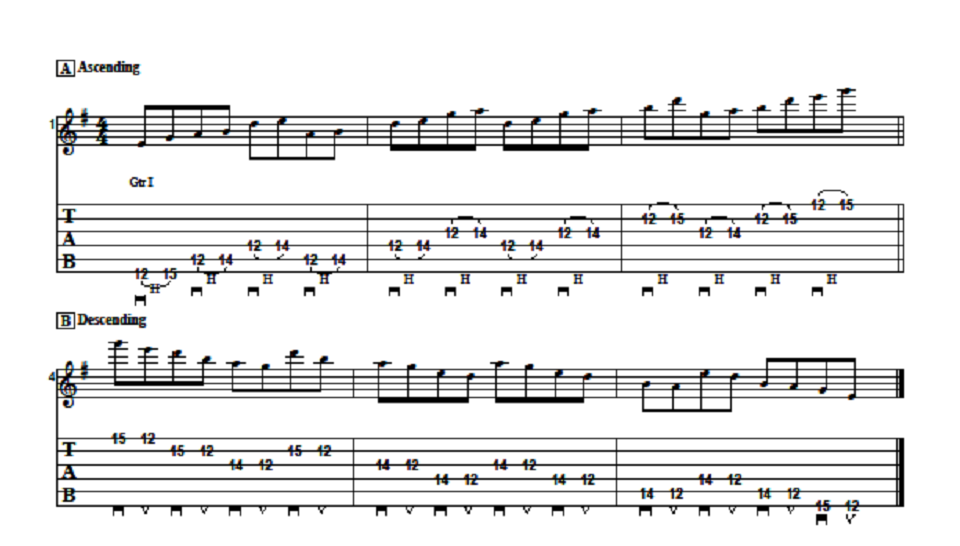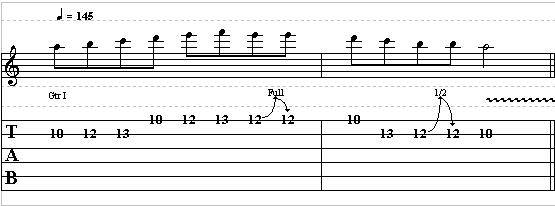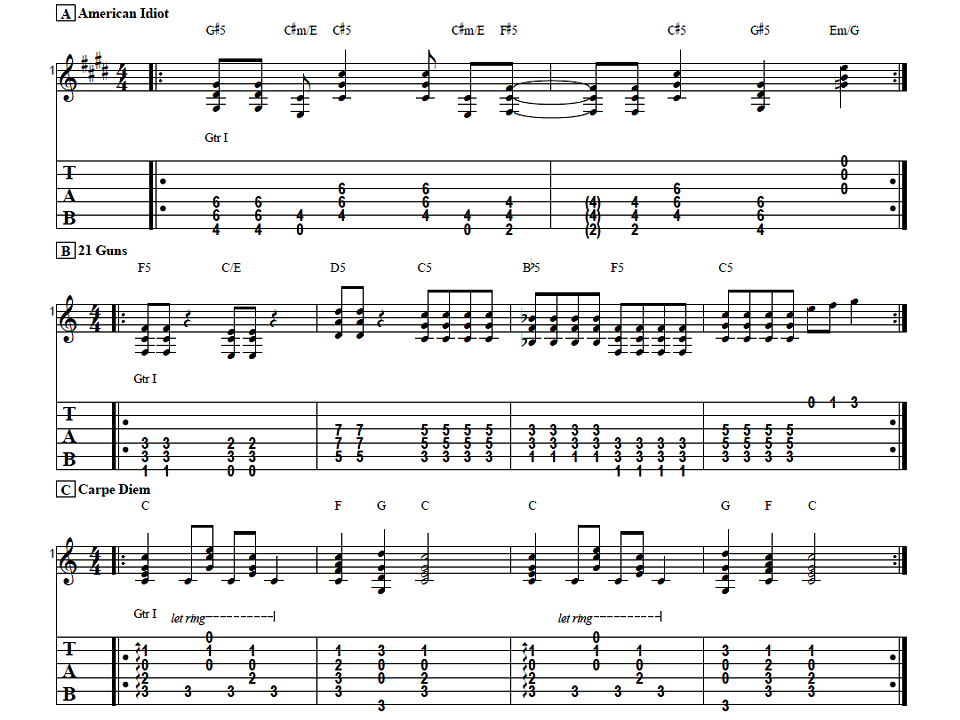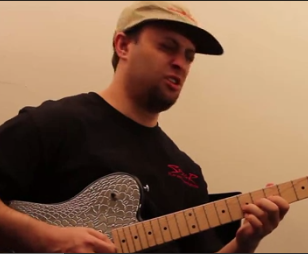If you’re looking to spice up the pentatonic scale and make it more musical then you’re in the right place. Check out this free lesson from Guitar Control instructor Darrin Goodman on an Eric Johnson style pattern to Spice Up The Pentatonic Scale With This Easy Sequence. Be sure to get the tabs to go along with this killer lesson.

Introduction
Hey everybody how’s it going? This is Darrin with GuitarControl.com bringing you this video lesson. Today I want to show you how to Spice Up The Pentatonic Scale With This Easy Sequence. So be sure to click on the link in the description for the tabs and let’s get close up and take a look at this.
The Pentatonic Scale
All right, for this example, I’m doing it in the key of E minor, but this is a movable shape, so it doesn’t matter what key you play it in, it’s always going to be the same sequence. So we’re using the minor pentatonic scale pattern number one starting on the 12th fret of our low E because we’re doing this in E minor. So really quickly if you do not know this sequence; we have 12 on the low E, 12, 15, 12, 14 on the A string, 12, 14 on the D string, 12, 14 on the G string, 12, 15 on the B string and 12, 15 on the high E. All right so if you don’t already know that scale pattern the first thing you’re going to want to do is just memorize the sequence.
The Lick
Okay so what we’re going to do is we’re going to break this into groups of six notes. Now this is not an Eric Johnson lick, but this is a kind of in the style he does, he does a lot of stuff in groups of six, so it’s this is just a really easy way that you can play the pentatonic scale and make it sound a little bit more musical and less like you’re just playing a scale.
The Lick Ascending
So let’s look at the ascending part of it. First what I’m going to do is I’m just going to ascend the scale. So you can do this by picking all of it or you could do hammer-ons or do both, you know just kind of whatever you feel like doing. So when I play this ascending I almost exclusively do it with hammer-ons because I just really like the way that it sounds. So i’m starting here on the 12th fret and I’m going pick and do a hammer-on to 15, then I’m going to go to the A string, pick, hammer and then to the 14th fret and then go to the D string, pick 12, hammer-on to 14.
How I’m doing this I’m going down hammer, down hammer, down hammer or you can alternate pick it, just either way it doesn’t really matter, just whatever is more comfortable for you to do. So that’s the entire sequence, so we’ve just played six notes and it’s based on three strings, it’s based on the fourth, fifth and sixth strings, now we’re going to start the sequence over again, but this time we’re going to start on the A string and we’re going to go the D string and then the G strings. So now going back to the A string. Now we’re just going to start the sequence over again on the D string to the G and B strings. And then finally we’ll start on the G string to the B and high E strings.
So like I said it sounds more musical, more interesting than just ascending and descending the scale. Now you wouldn’t necessarily want to play the entire sequence, but this is something where you could take a part of this and combine it with something else. So maybe you combine it with something else to make it sound more interesting. So now let’s take a look at it for descending.
The Lick Descending
So for descending this easy movable shape it’s more or less the same idea, but we’re just going to do it backwards. So we’re going to start on the 15th fret of the high E with my fourth finger and the 12th fret with my first finger. Now you could also pick and do a pull-off, but for me it’s extremely difficult to try to do pull-offs with stuff like that because of having to switch strings, so this one I almost exclusively pick it and when I pick this I alternate pick it. So put both of your fingers down at the same time, it just makes it a little bit easier, so my first finger is on the 12th fret and my fourth finger is on the 15th fret of the high E and I’m going to do a down stroke on 15 and then when I go to 12 it’s an upstroke and then when I go to the B string it’s 15 with a down stroke to 12 with an up stroke and then to the G string 14th fret with my third finger with a down stroke to the 12th fret with an up stroke.
Okay so now we’re just going to do the same principle that we did with ascending, so now I’m going to start on the B string, 15, 12, to the G string, 14, 12, to the D string, 14, 12, again alternate picking, so down, up, down, up. Now we’re going to start on the G string, 14, 12, to the D string, 14, 12, to the A string, 14, 12 and then finally we start on the D string, 14, 12, to the A string, 14, 12, to the low E, 15, 12. So that whole sequence slowly.
Changing Keys
So again this is an easy movable pentatonic shape. So if you wanted to Spice Up The Pentatonic Scale With This Easy Sequence in a different key, let’s say you wanted to do it in G, then we just move up to the 15th fret, because that’s where G is, same idea, like I said it does not matter what key you’re in, it’s just always going to be the same sequence.
Conclusion
All right, so I hope you enjoyed how to Spice Up The Pentatonic Scale With This Easy Sequence and you got something out of it. If you like the lesson give me a thumbs up. Leave a comment down below and let me know if there’s something you’d like to see covered in a future lesson by either myself or one of the other instructors at GuitarControl.com. If you haven’t already done so, please hit that subscribe button and hit the notification bell so that you get notifications in your inbox every time we upload new content, we upload several times a week and you don’t want to miss any of that stuff. All right, well that is all I’ve got for you today.
Thanks for watching how to Spice Up The Pentatonic Scale With This Easy Sequence and have a great day.




